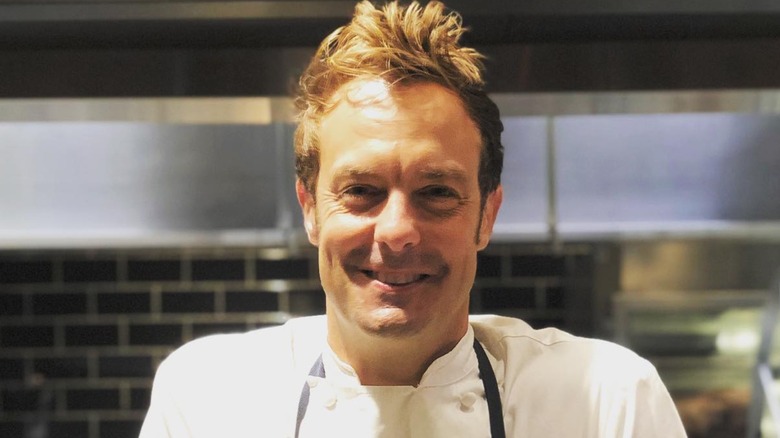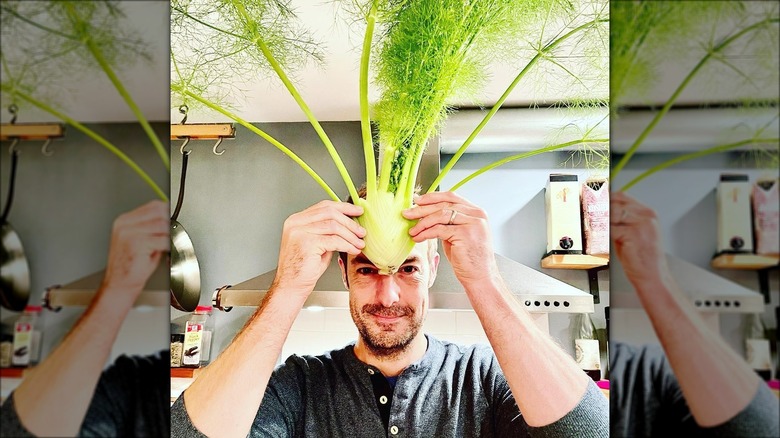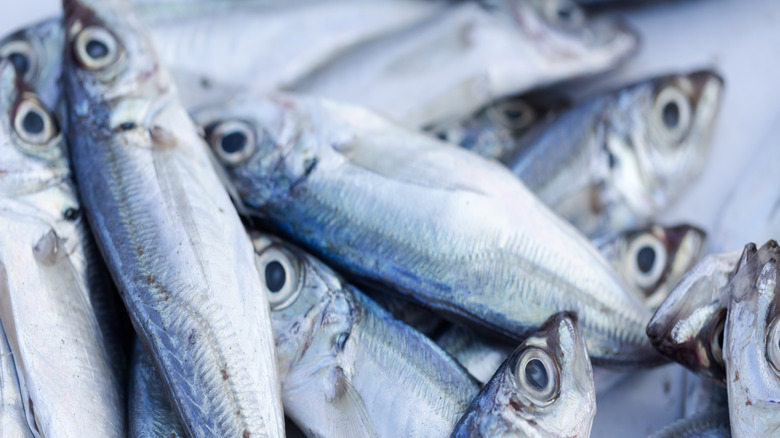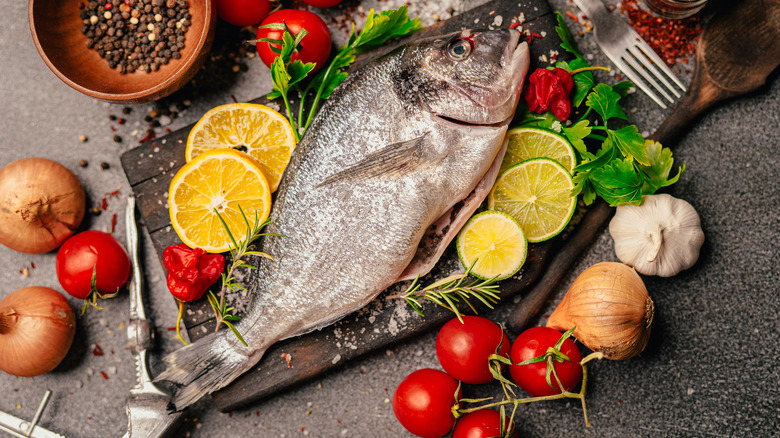The Truth About Barton Seaver From Alex Vs. America
On Food Network's new competition series, "Alex vs America," contestant Barton Seaver looked to take down the show's star, Iron Chef Alex Guarnaschelli. In a seafood battle, Seaver made a valiant effort to knock the culinary queen off of her pedestal. As seen in Episode 2, the Maine-based chef seemed ready to use his extensive seafood knowledge to offer a fresh take on the water's bounty. However, his smoked lobster dish with butternut squash and spicy beurre blanc sauce scuttled to the bottom of the competition.
Seaver has written seven books about seafood and once received Esquire Magazine's Chef of the Year designation, according to Food Network. After stints at various Washington, D.C. restaurants, the successful chef stepped away from the professional kitchen and now works as a National Geographic Explorer, offering an online program on seafood literacy. While he might not be standing at the restaurant pass these days, he's looking to use his knowledge of food to make a lasting impression on the seafood industry.
Why Seaver left restaurant work behind
In 2009, Seaver was named Esquire's Chef of the Year. At the time, the then-30-year-old chef ran the now-closed Blue Ridge restaurant in Washington, D.C. When Esquire asked him to describe his style of food, he deemed it "southern regionalism." Besides staying "out of the way of the ingredients," Seaver named showcasing flavors as his primary focus in cooking.
Although he opened several restaurants in his thirties, Seaver once told StarChefs.com, "The art and joy of creativity is in execution and that is where I would like to be focused," adding that he wanted to go back to working more closely with food every day. Fittingly, he expressed that he was embracing "opportunities outside of the kitchen" in a 2010 interview, focusing instead on advocacy and education work that he found more meaningful (via Starchefs.com). With his online programs, cookbooks, and television appearances, Seaver began to try to give people tools to protect the environment through better ways of cooking and eating.
Seaver's passion for sustainable seafood
Transitioning from chef to advocate, Seaver began to shift his food focus beyond the flavor and presentation on the plate. Though Seaver certainly seems to find fulfillment in his food advocacy work, he didn't necessarily envision doing it this late in his career. "I don't want to have to advocate for the ocean in ten years. If I do, we're in trouble," he told StarChefs.com in 2010. More than a decade later, he's still giving his all to sustainable seafood.
Currently, Seaver offers a course on seafood literacy on Rouxbe that instills "confidence and competency" in cooks who want to learn how to better prepare fish and shellfish. His lessons also touch on seafood sourcing, asserting that cooks need "work with nature" when looking for seafood since the ocean does not produce a limitless food supply. This isn't Seaver's only educational experience: He's also listed as a senior advisor and director of the Sustainable Seafood and Health Initiative at the University of New England. Through his position, Seaver looks to "promote healthier people, more secure food supplies, and thriving communities." Easier yet, curious diners can soak up Seaver's takes on "restorative seafood" by watching his TED Talk on YouTube.
Seaver's cookbooks share more than just recipes
While Seaver might not presently be serving fish dishes from a successful restaurant, the seafood authority has a litany of cookbooks, as seen on his website. These works seem to go beyond offering step-by-step recipes: Similar to his educational classes, there is important knowledge woven into every step. In a December Instagram post, Seaver discussed two of his recent releases. He likened "The Joy of Seafood" to a "User's Guide of Seafood," featuring nearly 1,000 recipes that are friendly to newbie cooks and use common ingredients to highlight the bounty of the sea. For foodies who want to take a deep dive into the aquatic world (or show off their ability to identify any fish based on a photo), Seaver recommends "American Seafood," which covers "every species caught in the U.S."
Less seafood-focused cookbooks authored by Seaver include one about sustainable grilling, another showing off seaweed recipes, and even one for kids. The common theme is a focus on health and environmental friendliness.
Seaver's tips on buying and cooking seafood
During a conversation with NPR, Seaver discussed the importance of choosing sustainable seafood. As a simple way to pick out fresh fish, he recommended looking for bright eyes and clean gills; for Seaver, when the eyes look like they're "inviting you to dinner," that piece of fish is a great catch. Seaver has also advocated for sustainably farmed seafood, defying the misconception that wild-caught is always better. "If we are to be a healthy society, both wild and farmed seafood must be part of our sustainable choices," he told the James Beard Foundation, describing the positive aspects of aquaculture. He especially recommends responsibly farmed bivalves, such as oysters and mussels.
When it comes to cooking seafood, Seaver often keeps it simple. According to one of his Instagram posts, mayonnaise is "a really great partner to seafood." He mixes it with lemon zest and grated Parmesan and spreads it over a cod fillet before popping it in the broiler for a crisp, flavorful crust. Finally, Seaver is a firm believer that your plate of seafood should always include a serving of vegetables. He said in his TED Talk that creating a diversified meal with "reasonable protein portions and copious amounts of vegetables" is more than just healthy eating; it also helps the environment by combatting the overproduction of animal products.




